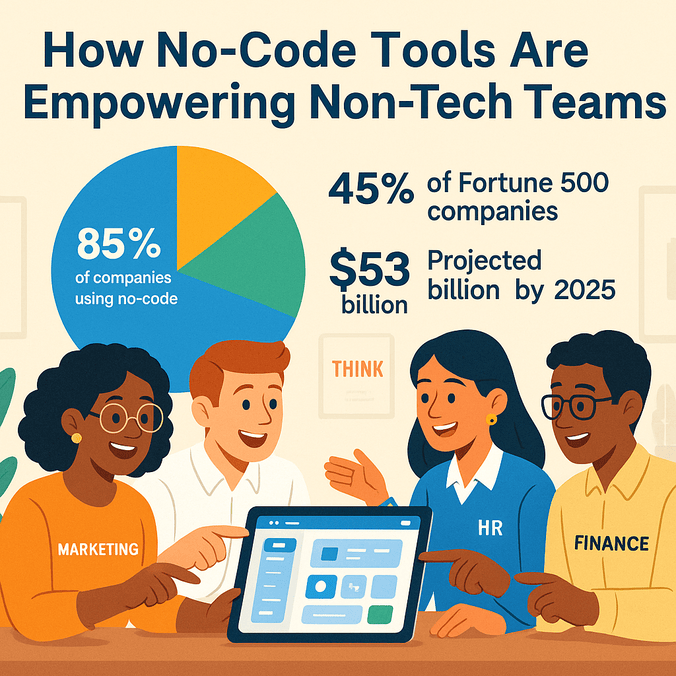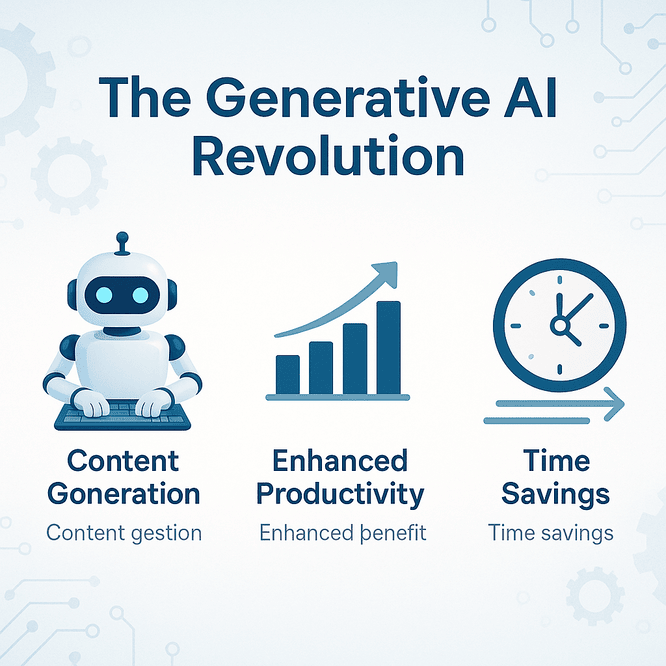Imagine walking into your favorite store and finding exactly what you need, even before you realize you need it. Sounds like magic, right? Well, it's the power of AI at work! Using AI to predict what your customers want before they ask is transforming how businesses engage with their consumers. You may wonder, how can this improve your bottom line and enhance customer satisfaction? In today's fast-paced market, leveraging artificial intelligence can help you not only keep up with customer demands but also stay ahead of the curve, creating memorable experiences that lead to loyalty and recommendation.
Understanding the Power of Predictive Analytics
The impact of AI on customer relationship management is no longer a futuristic idea—it's happening now. By 2025, a staggering 95% of online and telephone communications are expected to be powered by AI technology[^3^]. This dramatic shift signifies an incredible opportunity for you to tap into the vast potential of predictive analytics.
What Is Predictive Analytics?
Predictive analytics utilizes machine learning algorithms to analyze historical data, identify patterns, and forecast future trends. Imagine harnessing data from multiple sources, such as purchase history, online browsing behaviors, and social media interactions, to create a sophisticated profile of your customers’ preferences. This is not just a trend; it's a pivotal strategy in modern business that lets you anticipate customer needs with remarkable accuracy.
Why Should You Care?
- Enhanced Customer Satisfaction: By predicting needs, you create offerings that resonate with customers.
- Increased Efficiency: Automating these insights saves time and resources for your business.
- Boosted Profitability: Meeting customer needs ahead of time directly correlates with increased sales and repeat customers.
Real-World Power of AI in Predictive Analytics
Let’s take a moment to consider the implications of these statistics. Approximately 64% of business owners believe AI will enhance customer relationships, which highlights the trust in AI's potential to improve customer engagement[^2^]. But how do you implement this technology effectively?
Gaining Critical Insights
-
Data Collection: To leverage AI effectively, you must first gather robust data. This includes transaction details, feedback forms, social media interactions, and more. The more diverse your data, the more powerful your AI system becomes.
-
Machine Learning Implementation: Employ machine learning algorithms that can analyze customer behavior. For instance, tools like Google Analytics and HubSpot offer user-friendly interfaces to help you integrate and analyze data patterns easily.
-
Personalization: Create personalized customer experiences using the insights gained from AI. Tailoring services according to past interactions can lead to significant improvements in customer satisfaction rates and loyalty.
-
Stay Agile: The AI landscape is continuously evolving. Being open to adopting new technologies can keep you ahead of competitors who may resist these changes.
Current Trends Shaping the Future of Customer Engagement
The rise of AI usage in varied business landscapes showcases the changing dynamics in customer service. Here are some trends you should monitor:
1. Increased AI Utilization Across Business Functions
AI is no longer confined to one aspect of business; it’s quickly becoming integrated across marketing, sales, and service operations. Investing in AI-driven customer relationship management (CRM) software can help you streamline communication and data management processes.
2. Generative AI Adoption
According to Gartner, 80% of customer service organizations will adopt generative AI to enhance customer experiences[^2^]. This means you can create unique content, answer repetitive questions, and automate basic interactions—all of which free up your team to tackle more complex customer queries.
3. Voice Technology Expansion
Voice technology is making waves, with projections estimating 8 billion AI-powered voice assistants by 2025[^8^]. Consider integrating voice technology into your customer service strategy to empower users to interact with your services seamlessly.
Did You Know?
By incorporating AI into your strategy, you not only meet today's expectations but also prepare for future innovations. Traversing this new landscape could dramatically improve your customer engagement metrics!
Practical Tips for Implementing AI in Your Business
Pro Tip
Take actionable steps today to harness the full power of AI in predicting customer needs and improving their experience:
1. Invest in Data Collection Tools
Utilize tools such as SurveyMonkey for feedback collection or Google Forms to gather customer data.
2. Implement Machine Learning Software
Look at platforms like Salesforce or Microsoft Azure that offer machine learning capabilities tailored for business needs.
3. Personalize Marketing Efforts
A/B test your communication strategies; for instance, segment your email lists based on previous interactions and adjust the content accordingly.
4. Stay Updated on Trends
Join online forums or follow industry leaders on social media platforms to stay informed about new developments in AI.
Common Mistakes to Avoid
- Neglecting Data Privacy: Always ensure you follow data protection regulations when collecting customer data.
- Being Overwhelmed by Complexity: Start with straightforward tools before progressing to more complex systems.
- Underestimating Customer Feedback: Utilize customer feedback actively to validate your predictive models and improve your strategies.
Real-World Case Studies
One notable example is Starbucks, which utilizes their mobile app to track customer preferences and purchase history. This information allows them to offer personalized deals and suggestions directly through the app, enhancing the customer experience and driving sales. By understanding your customers’ habits, you too can create tailored strategies that resonate deeply with them.
Likewise, Amazon leverages predictive analytics to suggest products to users based on their browsing history. By consistently providing personalized recommendations, they not only increase average order value but also foster customer loyalty.
Conclusion
Harnessing the power of AI to predict customer needs isn't just a hypothetical concept—it's a practical strategy that can drive your business forward. By understanding customer behavior, you can provide tailored experiences that result in greater satisfaction and loyalty. As AI continues to evolve, implementing these insights will not only keep you competitive but also help you build meaningful relationships with your customers.
Key Takeaways
- By 2025, 95% of customer communications are expected to involve AI.
- 64% of business owners see AI enhancing customer relationships.
- Invest in data collection and machine learning to predict customer needs.
- Personalization of services based on predicted customer behavior is crucial for satisfaction and loyalty.
Start your journey towards better customer engagement with AI today! What strategies will you implement first? Take the time to assess your current methods and make plans to enhance them with the insights you've gained here. Together, let's make your customers feel understood—even before they voice their needs!
Frequently Asked Questions
What is AI predicting for customer needs?
AI predicts customer needs by analyzing data from various sources like purchase history, browsing patterns, and social media interactions. This allows businesses to understand trends and preferences even before customers express them.
How can my business start using AI for predictions?
To start utilizing AI for customer predictions, focus on these steps:
- Invest in data collection tools to gather comprehensive customer information.
- Implement machine learning algorithms that can analyze this data effectively.
- Begin by testing AI on specific customer segments to refine predictions.
What kind of data should I collect for AI predictions?
Gather a mix of data types, including:
- Demographic information: Age, location, and interests.
- Purchase history: Past buying patterns and frequency.
- Engagement metrics: How customers interact with your website or social media.
Can AI really enhance customer satisfaction?
Absolutely! Using AI to predict what customers want can lead to:
- Personalized experiences, making customers feel valued.
- Faster service, as AI can automate responses to common inquiries.
- Better product recommendations, which can boost sales and customer loyalty.
How will AI impact customer service jobs?
While AI will take over some routine tasks, it will also create opportunities for customer service professionals to focus on complex issues and enhance customer relationships. Here’s how:
- AI can handle repetitive questions, freeing up human agents for more nuanced support.
- Agents can work more efficiently with AI-driven insights that guide their interactions.
What should I be cautious about when using AI?
While AI is powerful, be mindful of a few things:
- Data privacy: Ensure compliance with regulations like GDPR when handling customer data.
- Overreliance: Don’t let AI replace the human touch entirely. Blend AI capabilities with personal engagement.
- Bias in data: Analyze your data sources to avoid biased predictions that could alienate certain customer groups.
How long will it take to see results from AI predictions?
While the timeline can vary, here’s a general outlook:
- You might see initial benefits within 3-6 months as AI starts analyzing data.
- For more substantial changes in customer satisfaction and retention, expect to invest a year or more of consistent effort and refinement.
Are there specific industries that benefit more from AI predictions?
Yes, several industries are leading in AI predictions, including:
- Retail: For customizing marketing and inventory management.
- Finance: In anticipating customer needs for better service offerings.
- Healthcare: For predicting patient needs and improving treatment plans.



